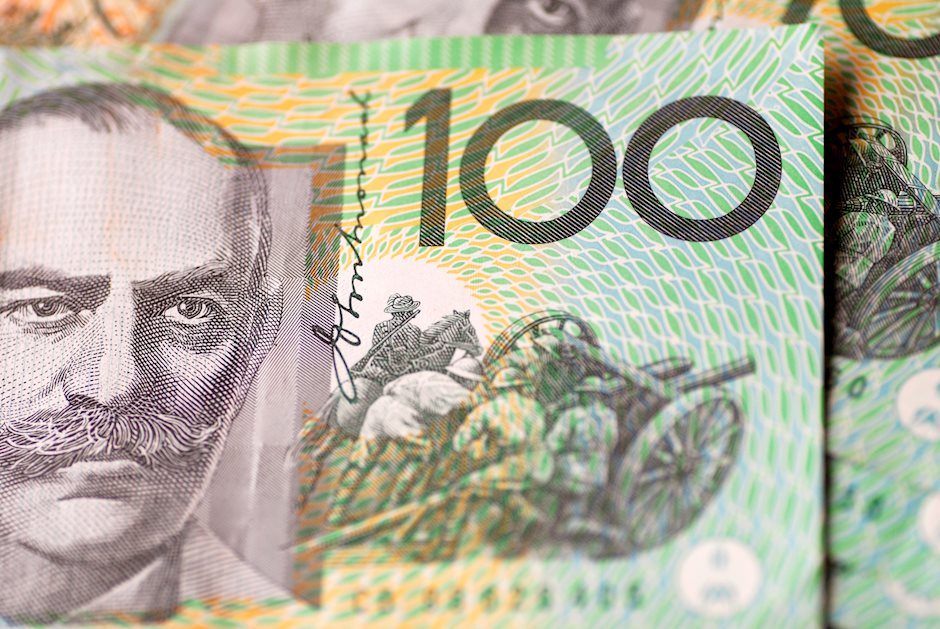AUD/USD advances to 0.6300 neighborhood, closer to two-week top set on Monday
- AUD/USD attracts buyers for the fourth successive day amid a modest USD downtick.
- The prospects for slower Fed rate cuts and elevated US bond yields favor the USD bulls.
- US-China trade war fears and the RBA’s dovish shift might cap the upside for the Aussie.

The AUD/USD pair regains positive traction following the previous day's pullback from the 0.6300 mark, or over a two-week top and builds on its steady intraday ascent through the first half of the European session on Tuesday. Spot prices currently trade around the 0.6285 region and draw support from a modest US Dollar (USD) downtick.
The USD Index (DXY), which tracks the Greenback against a basket of currencies, languishes near a one-week low touched on Monday amid the uncertainty over US President-elect Donald Trump's tariff plans. In fact, the Washington Post reported that Trump's aides were exploring plans that would apply tariffs only on sectors seen as critical to US national or economic security. Trump, however, denied the report in a post on his Truth Social platform. This, in turn, keeps the USD bulls on the defensive and turns out to be a key factor acting as a tailwind for the AUD/USD pair.
Meanwhile, the Federal Reserve (Fed) adopted a more hawkish stance at the end of the December policy meeting and signaled that it would slow the pace of rate cuts in 2025. The outlook remains supportive of elevated US Treasury bond yields, which, along with persistent geopolitical risks, should act as a tailwind for the safe-haven buck. Furthermore, concerns about a fresh round of US-China trade war and the Reserve Bank of Australia (RBA) dovish shift should cap the Aussie. This, in turn, might hold back traders from placing aggressive bullish bets around the AUD/USD pair.
Investors might also opt to wait on the sidelines ahead of this week's release of the FOMC meeting minutes and the closely-watched US Nonfarm Payrolls (NFP) report on Wednesday and Friday, respectively. In the meantime, Tuesday's US economic docket – featuring the ISM Services PMI and JOLTS Job Openings data – might provide some impetus to the AUD/USD pair. Nevertheless, the fundamental backdrop warrants caution before positioning for an extension of the recent bounce from the 0.6180 region, or the lowest level since November 2022 touched last week.
US Dollar PRICE Today
The table below shows the percentage change of US Dollar (USD) against listed major currencies today. US Dollar was the strongest against the Japanese Yen.
| USD | EUR | GBP | JPY | CAD | AUD | NZD | CHF | |
|---|---|---|---|---|---|---|---|---|
| USD | -0.39% | -0.37% | -0.14% | -0.18% | -0.66% | -0.84% | -0.16% | |
| EUR | 0.39% | 0.01% | 0.23% | 0.21% | -0.27% | -0.45% | 0.21% | |
| GBP | 0.37% | -0.01% | 0.24% | 0.20% | -0.28% | -0.47% | 0.20% | |
| JPY | 0.14% | -0.23% | -0.24% | -0.04% | -0.52% | -0.71% | -0.04% | |
| CAD | 0.18% | -0.21% | -0.20% | 0.04% | -0.48% | -0.67% | 0.00% | |
| AUD | 0.66% | 0.27% | 0.28% | 0.52% | 0.48% | -0.18% | 0.48% | |
| NZD | 0.84% | 0.45% | 0.47% | 0.71% | 0.67% | 0.18% | 0.67% | |
| CHF | 0.16% | -0.21% | -0.20% | 0.04% | 0.00% | -0.48% | -0.67% |
The heat map shows percentage changes of major currencies against each other. The base currency is picked from the left column, while the quote currency is picked from the top row. For example, if you pick the US Dollar from the left column and move along the horizontal line to the Japanese Yen, the percentage change displayed in the box will represent USD (base)/JPY (quote).
Author

Haresh Menghani
FXStreet
Haresh Menghani is a detail-oriented professional with 10+ years of extensive experience in analysing the global financial markets.

















